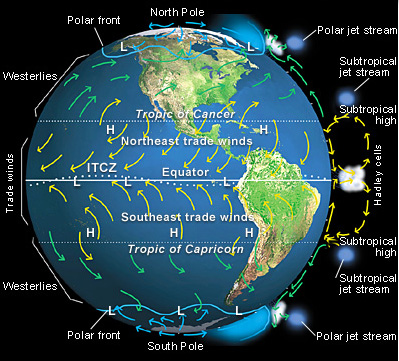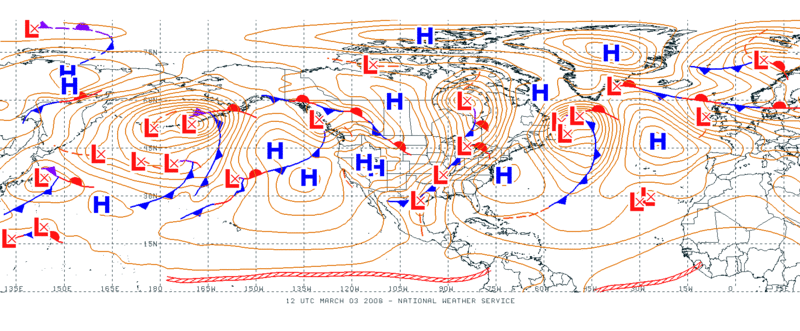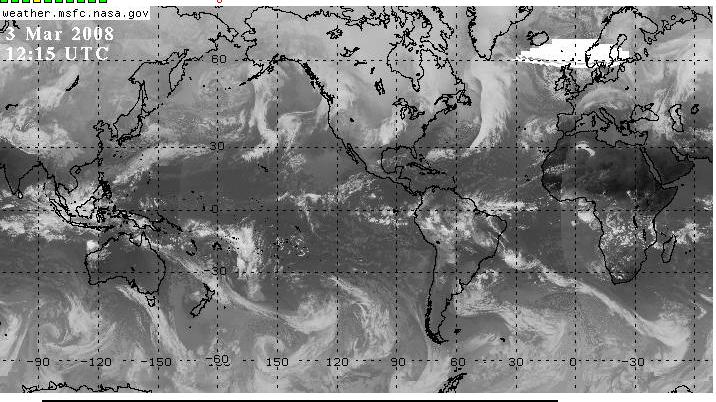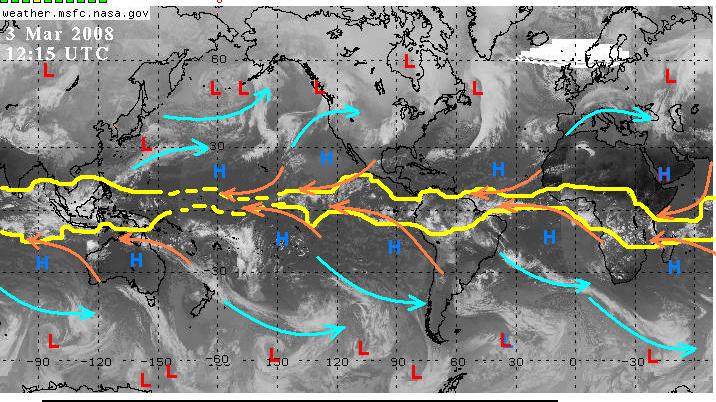General Circulation of the
Atmosphere
"The world-scale systems
of pressure and winds which persist throughout the year or
recur seasonally. Such winds transport heat from tropical to
polar latitudes, thus maintaining the present patterns of
world temperatures.
"This global circulation is driven by intense differences in
insolation between the tropical and polar regions, and is
strongly influenced by the Coriolis force. Air moves
vertically along the meridians and horizontally with the
wind systems, both at ground level and in the upper
atmosphere."
from "general circulation of the
atmosphere."
A Dictionary of Geography. Oxford
University Press, 1992, 1997, 2004.
Answers.com 14 Oct.
2011.
http://www.answers.com/topic/general-circulation-of-the-atmosphere
Features of the general circulation of the
atmosphere represents the time-averaged winds and the
time-averaged pressure systems over the entire earth's
surface as well as the upper air.
These include:
- Intertropical
Convergence Zone (ITCZ) (it is the
convergence of the northeast and southeast tradewinds
at the equatorial lows and often results in calm
winds; hence the term "doldrums"
from historical maritime terminology referring to
sailing ships becalmed in this region for extended
periods.
- Northeast
tradewinds
- Southeast
tradewinds
- Westerlies
- Polar front
- Hadley cell
- Subtropical
highs (historical maritime terminology called
these areas the "horse latitudes"...there are at least
a couple of hypotheses
as to the origin of that term--click on the link and
see "etymology).
- Subpolar lows--these
are the mid-latitude extratropicalcyclones.
Some features of the general circulation:



